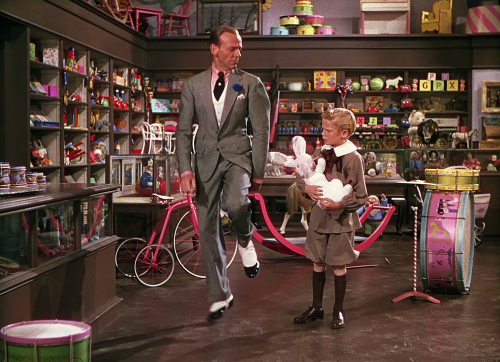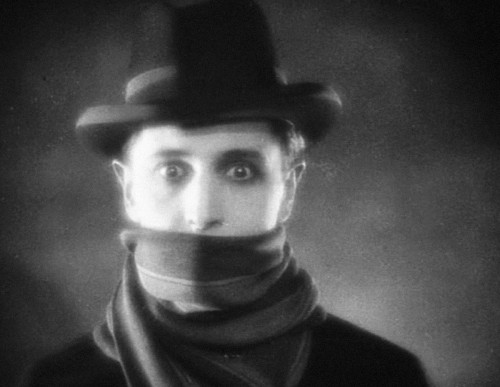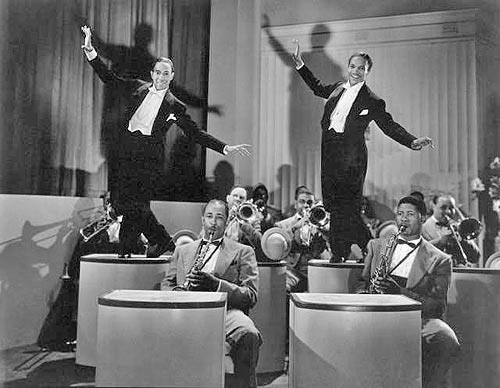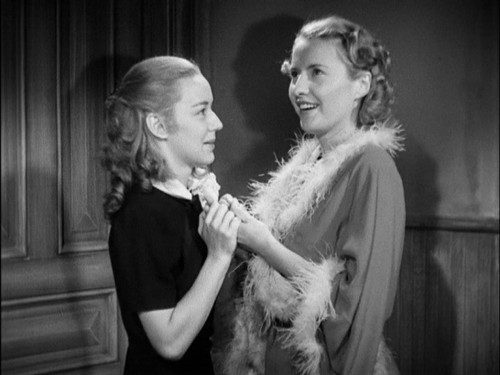TCM Fest 2014: Presentation
For many cinephiles, myself often included, TCM Fest means one thing – old films in 35mm, as they were meant to be seen. And not to worry, there was plenty of that to go around. But to limit oneself in such a way would be to miss out on larger, more varied possibilities of presentation. Digital projection is getting better every year, and while I doubt that we’ll reach a stage at which I legitimately couldn’t tell anymore (there are those reel changes, if nothing else), the hard-and-fast dividing line is gradually disintegrating as the more recent technology demonstrates unforeseen benefits.
The last film I saw at the festival was Alfred Hitchcock’s 1927 The Lodger: A Story of the London Fog, shown in a brand-new DCP (digital cinema package) restoration with live musical accompaniment from the Mont Alto Picture Orchestra. TCM does one or two of these sort of events every year (I missed this year’s Harold Lloyd film, Why Worry?, that received similar treatment), and as much as one quickly gets wrapped up in the film in question, the appeal and effect of a live orchestra playing alongside a film never quite diminishes.
The Lodger is a spectacular film, marred only by the studio’s insistence that it exhibit some greater moral clarity towards the end that severely clashes with Hitchcock’s earlier efforts to keep his audience drenched in dread, suspense, and no small amount of rather lurid sexuality. See if this sounds familiar – there’s a crazed serial killer slaying blondes, and no sooner does the latest victim turn up near the Bunting residence than a rather spooky man wearing similar garb to that of the killer’s comes inquiring about their spare room. And would you just believe that the Bunting’s daughter, Daisy, is a blonde herself?
The conclusion, sadly, lessens the overall impact of the film, but the sequences the precede it really land. Hitchcock was already a consummate filmmaker, utilizing a ton of special effects to remind us that evil can, in fact, live right next door. After all, it has to live somewhere. Hitchcock employs his intertitles in dynamic ways, everything from representing signs to moving them about as one’s inner conscience and fear might feel.
The only other DCP screenings I saw were Stormy Weather, one of two all-black musicals released in 1943 (the other being Cabin in the Sky) and East of Eden, which, together with The Lodger, really present the range of my experience with digital screenings of older films. The Lodger held a lot of the depth and clarity inherent to 35mm, but held none of its flaws – I couldn’t distinguish much in the way of film grain, and the stability is slightly unbecoming. Some may find these benefits. Stormy Weather had a pleasant amount of grain, but felt thin, as flat as the screen on which it was projected. East of Eden was a mess, holding none of celluloid’s clarity, contrast, or richness of color. The films themselves largely held up; Stormy Weather is a spectacular display of musical numbers with almost no plot to speak of. The famous Nicholas Brothers finish off the film with a routine so spectacular, the audience was left applauding too hard to hear the final dialogue. I hardly expected East of Eden to faithfully reproduce Steinbeck’s massive novel, but I was quite pleased to find that it held much of that great work’s themes and emotions. That James Dean boy’s got talent.
But, of course, there’s no better way to make a film presentation special than to just show the damn thing on film. We can see digital representations of thousands, perhaps even millions, of movies any hour of any day. To see a film on film? Always a pleasure, particularly when restored – as in the case of Stella Dallas – or simply a superior existing source – as with Easter Parade. Stella Dallas is, along with Mildred Pierce, sort of the archetype of the very popular “ever-suffering and -sacrificing mothers” genre. Barbara Stanwyck, at the ripe age of 27, plays Stella, raised in poverty and dreaming of society. She manages to seduce an executive at the local mill, Stephen Dallas (John Boles) into marrying her, but neither become terribly satisfied with their life together and are quickly separated. The one good thing to come of it, to Stella’s mind, is their daughter Laurel (played for most of the film by Anne Shirley). But Stella is increasingly unable to provide, emotionally or practically, everything Laurel wants from a mother, and from life.
This kernel of a story is so strong, it almost fools you into thinking the film finer than it is. But it lacks the core commitment to run all the way with its concept the way Mildred Pierce does. It’s too afraid to make anyone a villain. Stella’s ultimate sacrifice for her daughter isn’t so much bold and selfless as it is shortsighted and cowardly, an interesting note to play if the film didn’t portray her as a mixture of victim and saint. She wasn’t forced into this position, and there were plenty of solutions that would leave her in less pathetic a state. The film just ignores those options, hoping instead that its dour finale will blind your perception with tears. The film was presented in a new restoration that looked great.
Easter Parade, however, was a complete delight, from top to bottom. TCM presented the film on a IB Technicolor print, a special process that ensures that it will retain its color pretty much indefinitely, a not insignificant contribution when watching an MGM musical. Originally set to star Gene Kelly, a recently-retired Fred Astaire agreed to give it a whirl after Kelly broke his ankle (in anger after losing a volleyball game!). Astaire had such a good time of it, and the film was such a success, that he went on to make over a dozen films over the next thirty years. Perhaps, had Kelly not broke his ankle, we’d have missed out on such films as Funny Face, Royal Wedding, and The Band Wagon (along the way giving Debbie Reynolds some pointers for Singin’ in the Rain), or at least his contributions therein.
Even with that curiosity aside, Easter Parade is a magnificent film, tailor-made for Astaire’s screen persona. He plays Don Hewes, a dancer who, after getting dumped by his girlfriend and dance partner, Nadine (Ann Miller), tries to show her what’s what by pulling an uneducated, untrained girl off a barroom stage and making her his partner. But Hannah Brown (Judy Garland) barely knows her left from her right, let alone the splendor of ballroom dancing.
What’s so very exquisitely fine about this picture is that, while happy to embrace all the comedy inherent to the set-up, it never does so at the expense of the drama. Hannah’s struggles are quite real, as are her eventual feelings for Don. Though she’s clearly a much less capable dancer than he, his frustrations (and Astaire played condescension beautifully, particularly as he aged) with her are depicted in such a way as to endear her to us, rather than align us with his sense of superiority. There is, perhaps, a right way of doing things, but not at the expense of basic dignity. Add to that a surprisingly progressive approach to gender and relationships, and the finale practically had me out of my seat with applause.































